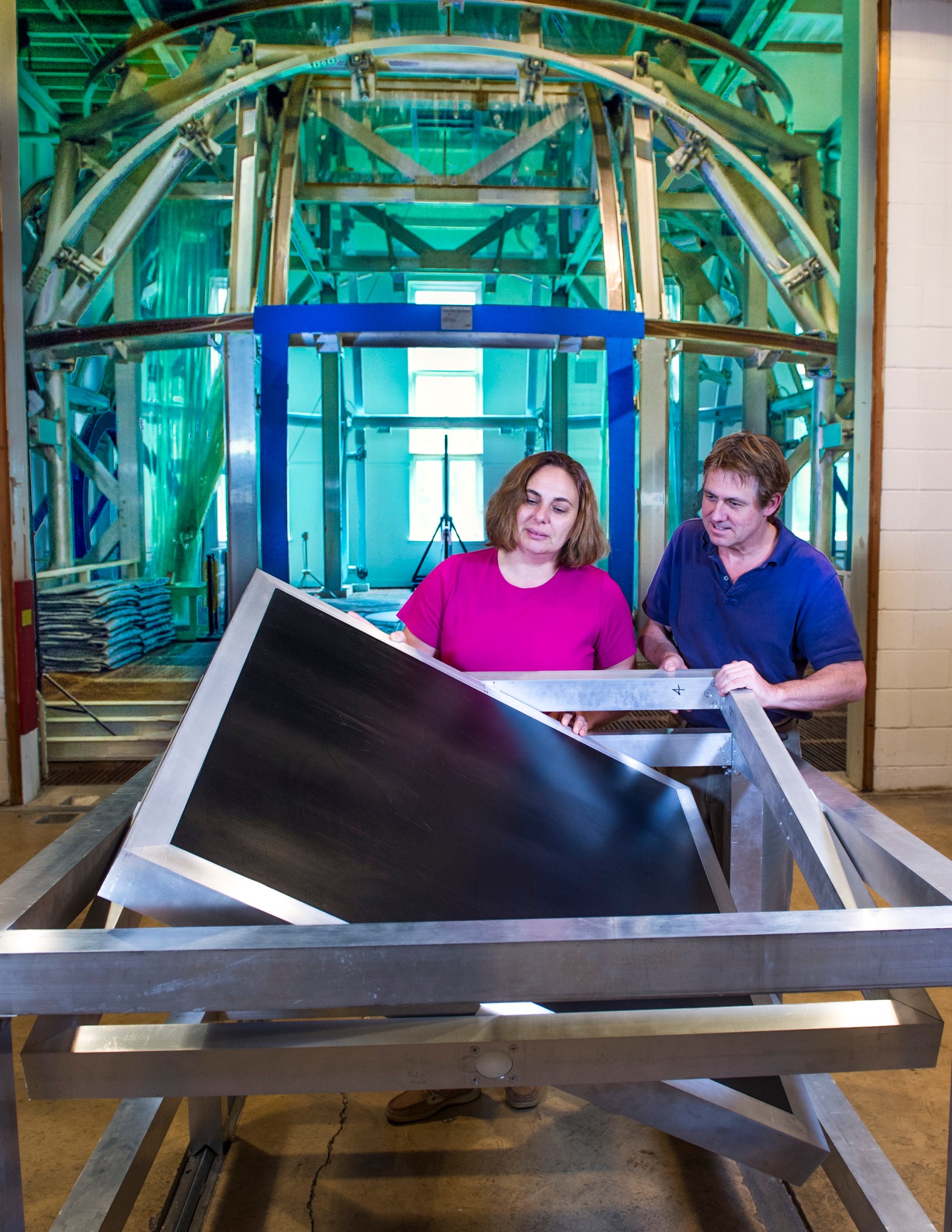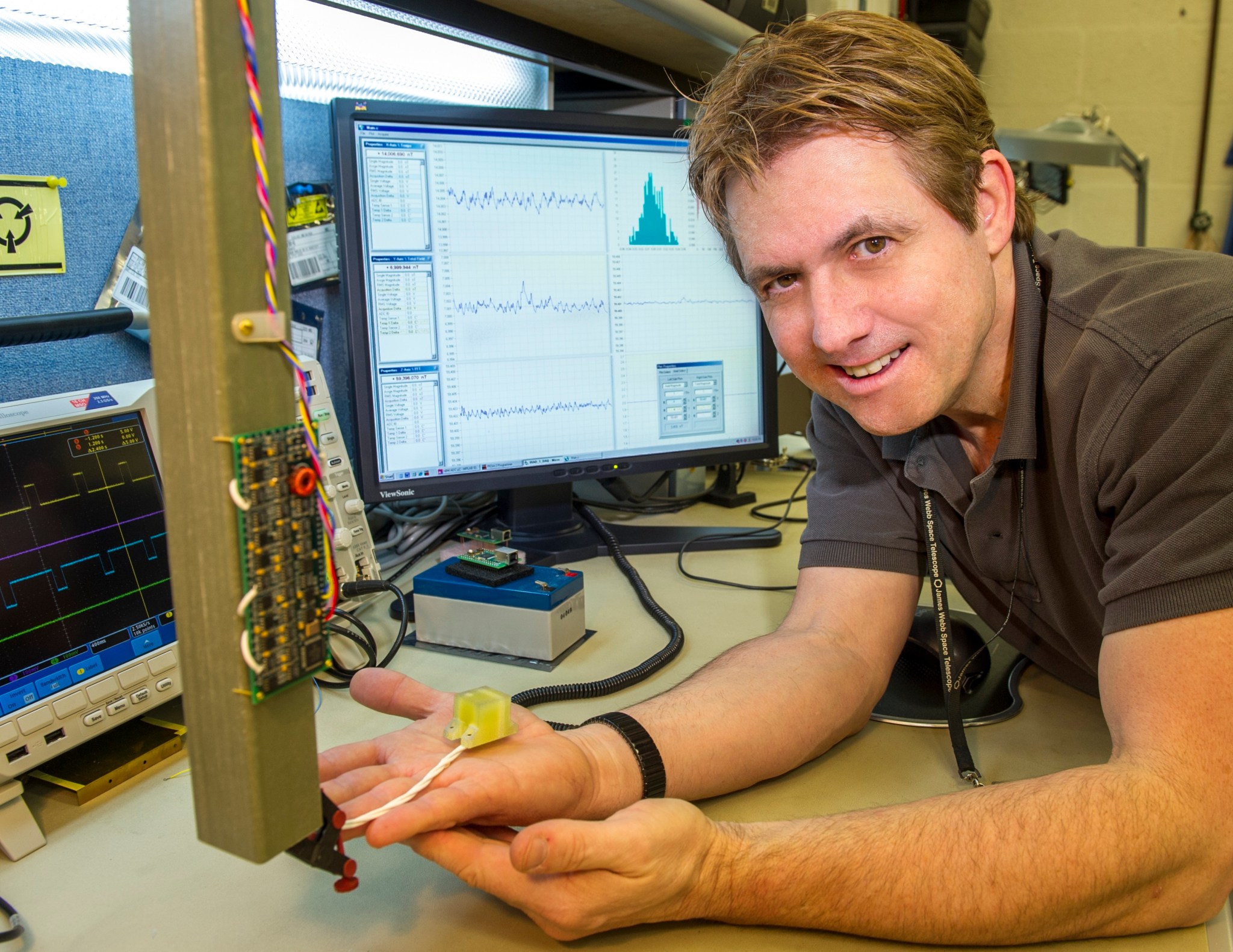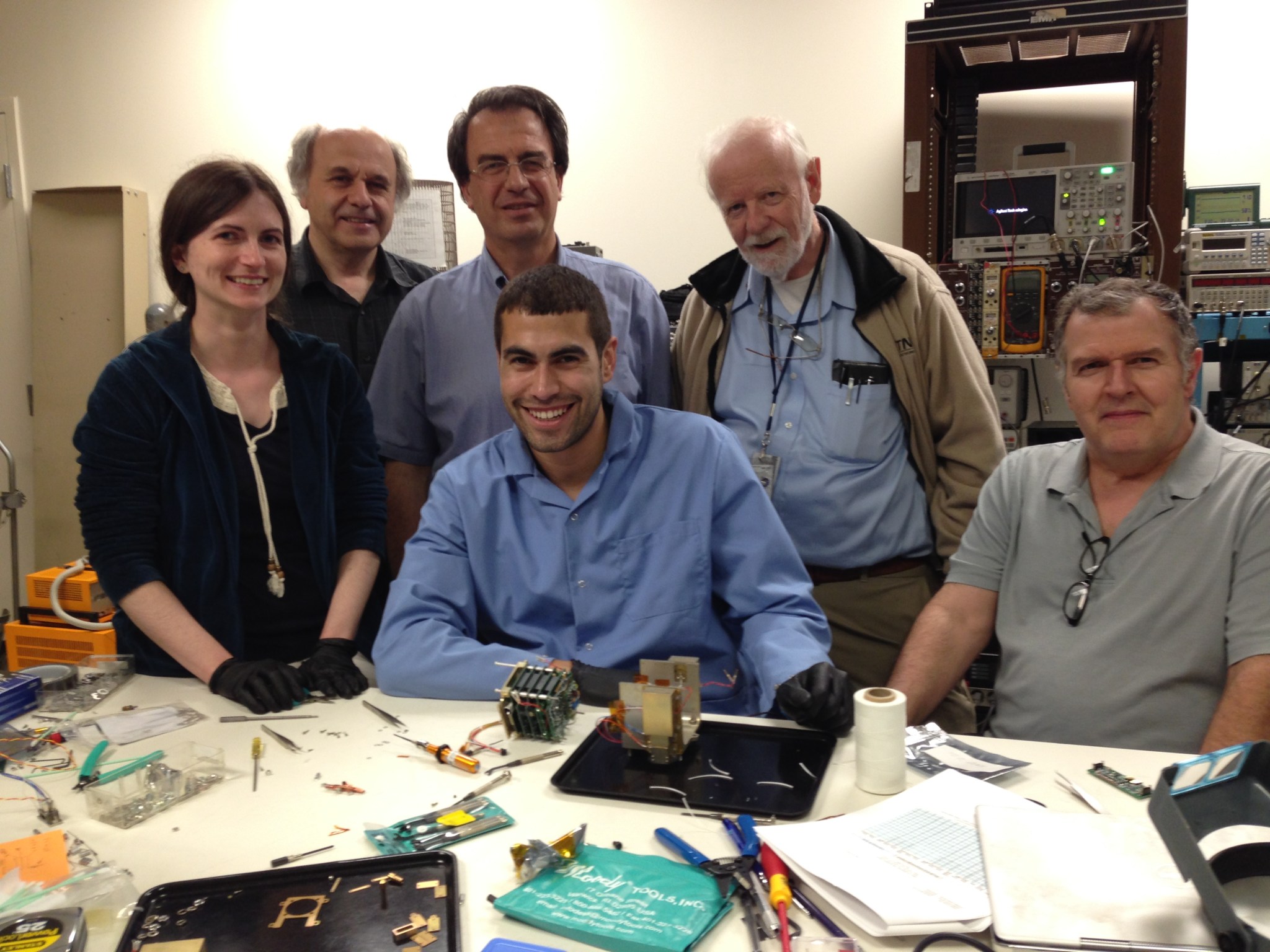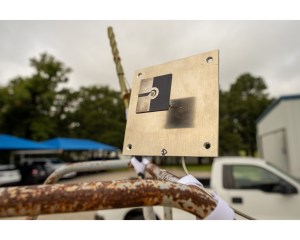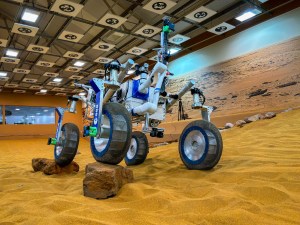The Dellingr six-unit CubeSat, which is taking its developers just one year to design, build and integrate, won’t be the only potentially groundbreaking capability for NASA. Its heliophysics payloads also are expected to significantly advance science on tiny platforms.
Making Dellingr’s maiden journey perhaps as early as January 2016 are two different magnetometer systems and a miniaturized ion/mass spectrometer. All three received support from the Internal Research and Development (IRAD) program at NASA’s Goddard Space Flight Center in Greenbelt, Maryland, said Nikolaos Paschalidis, Goddard’s heliophysics technology lead and Dellingr payload manager.
Like their colleagues on the Dellingr-development team, instrument scientists and engineers had just one year to complete their payloads. “Building an instrument in just one year is a challenge,” said Paschalidis. “It has been very intense,” agreed Todd Bonalsky, a Goddard engineer who designed one of Dellingr’s two magnetometer systems. “It will pay back in the end. We have a niche that needs to be filled.”
Never-Before-Flown Magnetometer Systems
According to Bonalsky, NASA currently lacks a low-power, inexpensive magnetometer small enough to fit inside a CubeSat. As a result, the CubeSat community relies on commercial-off-the-shelf magnetometers “that do not have the necessary accuracy or precision for science-grade measurements of the auroral zone,” Bonalsky said.
He believes his instrument — coupled with another novel, no-boom magnetometer created by Principal Investigator Eftyhia Zesta — will give the CubeSat community a tool that delivers high-quality, highly accurate data of Earth’s magnetic fields for a fraction of the cost. However, he readily concedes his instrument in no way rivals the larger, more robust magnetometers Goddard has built for NASA’s MAVEN, Juno and other interplanetary missions.
“Ours isn’t as capable as these heritage magnetometers, but for our purposes we really don’t need their level of sophistication. We need something that is less expensive, can fit into a CubeSat, and offers high-resolution, highly accurate data,” he said.
Achieving this milestone — which will be a first for CubeSats — involved a marriage of sorts.
All spacecraft generate their own magnetic fields. To prevent those fields from contaminating the magnetic forces scientists actually want to measure, magnetometers are typically placed on a large boom that extends far from the spacecraft. CubeSats, however, don’t have the real estate to accommodate such a large device. Therefore, Bonalsky only had room for a 30-inch boom — which is better, but not ideal. “Even when deployed, the magnetometer will still be in a fairly magnetically dirty area,” he said.
Enter the no-boom magnetometer system, a versatile capability that promises scientific-grade observations on a variety of platforms, including CubeSats. “It will allow us to take advantage of any potential future ride opportunity due to its easy integration and low requirements on the bus functions,” Zesta said.
Comprised of multiple miniaturized fluxgate magnetometer sensors placed inside the satellite bus, the no-boom magnetometer will measure the magnetic fields or “noise” generated by torquers, solar panels, motors and other hardware on the Dellingr spacecraft. Sophisticated computer algorithms that Zesta’s team created then will analyze both the external and internal magnetometer data to subtract spacecraft-generated noise from the actual science data.
“The Dellingr project is a great opportunity to see how this will work,” Bonalsky said, adding that both magnetometer systems will undergo testing at the Goddard Magnetic Test Facility in November. A complete integration must be completed by the end of December.
“Magnetic field measurements are perhaps the most fundamental type of measurement in heliophysics,” Zesta said. “CubeSats can offer an inexpensive means to gather these multipoint measurements, which we can use to improve global models.”
History-Making Spectrometer
The third payload, a miniaturized ion/mass spectrometer developed specifically for CubeSats by a team led by Paschalidis and Goddard heliophysicist Sarah Jones, is an improved duplicate of another that will be launched aboard the National Science Foundation-funded ExoCube mission in January 2015.
“CubeSats provide easy access to space,” said Paschalidis, who, while building the Dellingr payload, completed and delivered the ExoCube instrument to the California Polytechnic State University in July. The university is leading the ExoCube mission. “They offer the potential to discover something of interest in a relatively short period of time and the capability to fly a constellation of CubeSats for simultaneous, multipoint measurements, something which has been the dream mission for many years. That’s how the CubeSat business will evolve.”
Like its ExoCube sibling, the Dellingr instrument will measure the composition and density of various ions and neutral elements in Earth’s lower exosphere and upper ionosphere, a volatile region of the upper atmosphere that affects satellite communications and creates a drag that can degrade satellite orbits. “This will be the first time we will make direct in-situ measurements of hydrogen, and the first time since the era of NASA’s Dynamic Explorer-2 in 1981-1983 to make global in-situ measurements of oxygen, helium and nitrogen,” Jones said, referring to ExoCube’s science goals. “We’re making history with a CubeSat.”
This is just the beginning, said Paschalidis. With the mass spectrometer flying on two separate spacecraft, his ultimate goal is to team with others to fly many of these instruments. Together, they could gather simultaneous, multipoint global measurements, which he says is important to understanding the flow of mass and energy in the thermosphere, ionosphere, and magnetosphere. This process causes the upper atmosphere to inflate, creating friction that ultimately brings down satellites and other space assets. “We’re going to do more with this instrument,” he promised.
Related Links
- Feature: “NASA Skunkworks Team Set to Deliver Newfangled 6U CubeSat” (Nov. 18, 2014)
- Feature: “The Future of CubeSats” (Aug. 15, 2014)
- NASA’s CubeSats website
- Technology news from NASA Goddard
Lori Keesey
NASA’s Goddard Space Flight Center, Greenbelt, Maryland



























